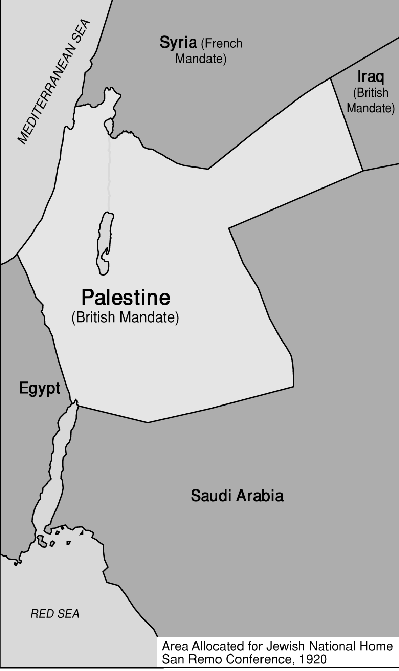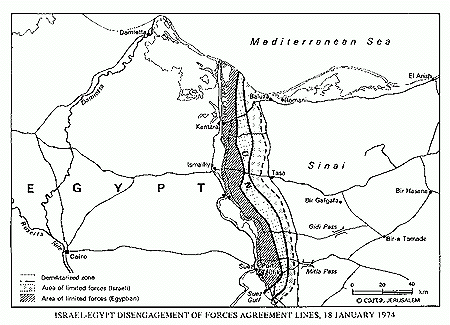


The Ottoman Empire, at the beginning of the 20th century, maintained control of Palestine. However, after World War One, Britain gained an active role in Arab affairs and had settled in Palestine as part of the occupation agreement with the League of Nations. In 1917, the Balfour Declaration was announced, showing British support for a Jewish homeland (with rights for non-Jewish inhabitants). In 1919, the League decided they wanted Britain to prepare Palestine for independence with the provisio that Palestine have a Jewish homeland. As a result of these preparations, Britain created the nation of Transjordan (now Jordan) in the eastern region of Palestine. Tensions were beginning to mount, considering the ire of people who were in one nation one day and an entirely different one the next.

With the close of World War Two, a Jewish homeland was even more desired by the Jewish population of the world. Nearly 2/3rds of the Jewish community in Europe was slaughtered by Hitler, and prejudice to this day still exists in great form. It was therefore with great urgency that this matter was pressed forward. The Arab populace of Palestine was alarmed at the great influx of Jewish settlers into their nation. Figures of Jewish settlement rose greatly: in a mere decade, Jewish settlers almost matched their Arabian counterparts in population. In an effort to maintain the peace, British troops occupied most of Palestine but were aware of animosity towards them, and in 1947 declared that they would withdraw by 1948. The United Nations decides to divide Palestine into two different homelands: one Jewish, one Arab (according to settlement and population).
After the United Nations handed down their decision, and Israel declared a sovereign state in May of 1948, the Arabian nations of Egypt, Jordan, Iraq, and Syria (all close neighbours of the new nation) declared war against Israel on the grounds that the land it was occupying was Arabian land, not Jewish. For two years (1948- 1949), a war raged between the bordering nations, and resulted in the gaining of more land for Israel (and a loss of much of the Arabian homeland in the former Palestine). Pretty much the sole gain for the Arabian nations was the West Bank, which Jordan took over; and the Gaza Strip, which Egypt claimed. Israel had proven itself to be a nation in its own right.
The 1960s brought an explosion of force on the part of the Arab bloc and a surprise movement by the Israelis. The Six Day War, as it became known, was important because it demonstrated yet again that Israel had sufficiently mobilised its troops and its people to fight for their young homeland. The first attack came from Israel, who struck at Egypt on the 5th of June and left their air forces devastated. Because of their lack of air cover, Jordan, Iraq, and Syria soon had to surrender due to inadequate military force. Egypt never even had a chance to call an offensive strike against Israel due to their debilatating first blow. One outcome of this war was a great gain in land for the Israelis: the Gaza Strip, the Golan Heights, and the West Bank Territories. This held Israel in a good bargaining position, in theory, with the Arab nations. Perhaps they would sign a pact which recognised Israel as a sovereign state, and guarantee her territorial boundaries.

Nassar, the president of Egypt, died in 1970 in the middle of this conflict of nations. His successor was Anwar Sadat, a self-proclaimed revolutionary who spent time in jail during the British occupation of Egypt after World War Two. Sadat recognised the need for peace between the Middle Eastern nations and Israel, and as such broke off ties with the Soviet Union in 1972. Since the US realised the lessening of power of the Soviet Union was a tricky card to play on their part, the US took a delicate tack with Egypt, preferring not to give aid or military support so soon after ties had been broken. Sadat decided to then go back to the Soviets, who suspected him of double-crossing them and refused to reinstate aid. At this point, he had no choice. Sadat chose to invoke the option of war against Israel in a bid for Western attention. At least this way Egypt could still hurt Israel and the West, too, for looking like stooges while tensions mounted.
Before the war actually began, however, Sadat, along with OPEC, declared an embargo on oil to the United States and its allies, which weakened (but not crippled) the US and sent oil prices skyrocketing. During the course of the war, Golda Meir (the Israeli Prime Minister) sought the help and assistance of the United States, who was reluctant to intervene until the threat of nuclear capacities was introduced. At that point, the United States decided to aid Israel with the hopes of averting any need to deploy a nuclear bomb. Eventually, in October of 1973, the United Nations called for a truce in that region (which was supported by Soviet and American sides).

One year after Sadat'’s assassination, Israeli forces moved into Lebanon (to the north) and expulsed the PLO from that territory. For two years, bitter and intense fighting waged until finally in 1984 Israeli troops withdrew from Lebanon. Around 1987, the Intifada began in the regions of the West Bank and the Gaza Strip. Six years later, in 1993, the PLO and Israel reached an agreement between each other that the PLO would maintain a partial control of the West Bank, where a great deal of Arab homeless remain, despite Israeli stronghold over the area.

The colour photo of Jerusalem is from the book Jerusalem Skyline
by Duby Tal and Moni Haramati, ISBN 9-650-506-802.
[(c) all rights reserved]